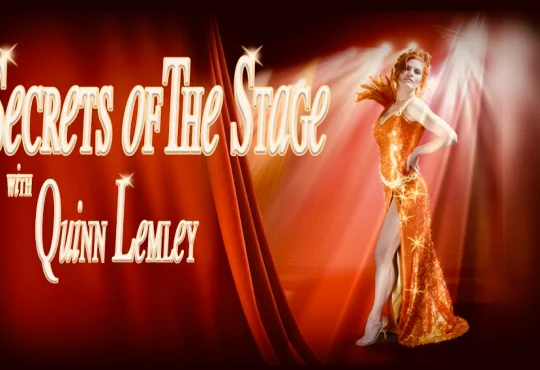Inside the Scandalous Real-Life Story
To “The Swans,” a coterie of New York high society women, Truman Capote was an amusing circus act. Known for penning Breakfast at Tiffany’s and In Cold Blood, these aristocratic ladies invited him to lavish dinner parties and fanciful getaways to indulge in his animated, gossip-filled stories. Author Laurence Leamer found himself captivated by Capote’s mélange of wit, joie de vivre, and callousness, and chronicled his falling-out with his one-percenter gal pals in the 2021 book Capote’s Women: A True Story of Love, Betrayal, and a Swan Song for an Era, which has been adapted into a glamorous new FX series.
“He knew he had to entertain,” Leamer tells Rolling Stone. “He was a brilliant man. He had such insight into psychology. He knew what they were and what they wanted. The moments he wasn’t entertaining, he would be gone. They adored him, but they adored him like the court jester who pleases the king.”
Feud: Capote vs The Swans dramatizes Capote’s literary ascendance and drunken decline across its eight episodes, which premiered Jan. 31 on FX and Feb. 1 on Hulu. It picks up at the height of Capote’s literary success, as the Rabelaisian author (Tom Hollander) frequents lavish lunches and befriends the women of New York’s upper crust, who he affectionately calls “The Swans.” It’s not until excerpts of Capote’s novel Answered Prayers were published in Esquire, divulging the socialites’ scandals and intimate secrets, that Capote’s closest bonds begin to unravel.
The series, directed largely by Gus Van Sant and written by Jon Robin Baitz, features a cast of renowned actresses in the infamous roles: Naomi Watts as Babe Paley, Diane Lane as Slim Keith, Chloë Sevigny as C.Z. Guest, Calista Flockhart as Lee Radziwill, Demi Moore as Ann Woodward, and Molly Ringwald as Joanne Carson. It marks the second installment of Ryan Murphy’s Feud anthology series; the first followed the searing rivalry between What Ever Happened to Baby Jane? divas Joan Crawford (Jessica Lange, who also stars as Capote’s deceased and deranged mother), and Bette Davis (Susan Sarandon).

The Swans in ‘Feud: Capote vs. The Swans.’
FX
Feud: Capote vs The Swans captures an age of elegance and pompousness that’s since fallen out of fashion, Leamer says. Still, Capote was entranced by The Swans, who bathed in opulence and glamor, yet lived dissatisfied lives.
“There are few greater pleasures in life than to know that somebody who is richer than you or is better looking is unhappy,” Leamer explains. “So, you got eight hours of that.”
The Swans glided from one luxurious party to another, seemingly disintered in issues of national concern like American opposition to the Vietnam War or the civil rights movement. That was just background noise. Gossip over glasses of Chardonnay took precedent over the cultural revolution.
“This group is still living under a bell jar, which I find fascinating,” Baitz says. “This society, slightly rigid, decrepit, but glamorous-appearing New York society, to my way of thinking, was right for a very subtle kind of critique by showing its last dances.”
Rolling Stone sat down with Capote’s Women author Leamer to discuss the real-life story behind Feud: Capote vs. The Swans, from the opulent Black and White Ball hosted by Capote to the undiscovered pages of Answered Prayers.
The Flock
Barbara “Babe” Paley, deemed the most elegant of the bunch, worked as a fashion editor at Vogue in 1938, and ranked frequently in Time magazine’s best-dressed women in the world list. Capote once told a journalist, “Mrs. P had only one fault: she was perfect; otherwise, she was perfect.” She married media executive and CBS founder Bill Paley in 1947, but her husband’s extramarital affairs led her to grow increasingly close to Capote.
“Every moment of his life, he was working and listening,” Leamer says. “He had a great memory. He put it back there in his mind, one day wanting to use it.”
There was Nancy “Slim” Keith, who married three times: First to legendary film director Howard Hawks, then producer Leland Hayward (who brought Rodgers and Hammerstein’s The Sound of Music to Broadway), and finally British banker and baron Kenneth Keith. Slim had a soft spot for Capote, and was the only swan to forgive the disgraced author. C.Z. Guest, like Paley and Keith, was named to the International Best Dressed List Hall of Fame. Born into a wealthy Boston Brahmin family, she enjoyed gardening, horseback riding, fox hunting, and fashion desigining, and married a relative of Winston Churchill.
Lee Radziwill, often overshadowed by her older sister Jacqueline Kennedy Onassis, went off and married a Polish royal in 1959, Prince Stanislaw Albrecht Radziwill. After she filed a libel lawsuit against Capote, their friendship was never the same. Capote claimed in a Playgirl magazine interview that Gore Vidal was removed from a White House dinner party because he “got drunk [and] insulted Jackie’s mother,” in 1961. Following the incident (exaggerated by Capote, of course), Vidal sued Capote for $1 million. Radiziwill refused to testify on Capote’s behalf. Vidal eventually won the suit, but settled for a written apology.
Ann Woodward, who hailed from Kansas, began as a radio actress and showgirl before entering New York high society, but rumors around the death of her husband soon became too much for her. Although Joanne Carson, the ex-wife of entertainer Johnny Carson, was not considered a Swan, she stood by Capote to the very end.
Not pictured in the series was Gloria Guinness, who married banking billionaire Loel Guinness, and Marella Agnelli, born an Italian princess who married the head of Fiat, Gianni Agnelli.
“His favorite is whoever he’s with at the moment, and he’s trashing everybody else including Babe sometimes,” Leamer adds.
The Black and White Ball
Everyone wanted to know who attended Capote’s 540-person Black and White Ball in 1966. So, the New York Times published the guest list. The masquerade ball, which took place at The Plaza hotel, featured the likes of Marianne Moore, Frank Sinatra, Gloria Vanderbilt, the Italian princess Luciana Pignatelli, and the guest of honor: Washington Post publisher Katharine Graham. Capote donned a 37-cent mask from FAO Schwarz, while Pignatelli wore a 60-carat diamond borrowed from luxury jeweler Harry Winston. For dinner, they served spaghetti and chicken hash (with one fictionalized Feud’s character stunned at the choices) and danced away in elaborate attire in the Grand Ballroom. Leamer says Capote’s Black and White Ball turned New York high society upside down.
“It created a new sort of society,” Leamer says. “That evening he asked these 540 people, if you don’t want to come in and be photographed by the paparazzi, there’s another door you can come in. Nobody came in that door. They all wanted publicity.”

Socialites Jean Murray Vanderbilt (left) and Barbara “Babe” Paley with writer Truman Capote, circa 1957.
ullstein bild via Getty Images
La Côte Basque, 1965
The ball may have marked Capote’s swan song. As an honorary guest within high society, Capote jumped at the opportunity to turn the Swan’s delicate stories into entertainment for the masses. In November 1975, “La Côte Basque, 1965,” the first excerpt from Answered Prayers, was published in Esquire, revealing thinly veiled stories of the women’s lives. Using fictional and real names, the piece exposed the affair CBS head Bill Paley had with another woman, thereby permanently severing the relationship Capote had with Babe Paley, the Swan he admired most. The first episode reenacts the period sex scandal in Paley’s abode, which left “sheets bloodied with stains the size of Brazil,” as Capote described it. And scenes of Bill Paley scrubbing the bloodied floor as his wife enters the room captures the CBS exec’s humiliation.
Furthermore, the excerpt suggested that Woodward murdered her husband, William Woodward, Jr., a banking heir. Woodward claims she shot her husband to death after mistaking him for an intruder, and Capote’s piece suggests that her mother-in-law paid off the police to avoid an impending scandal. Woodward (Moore) is described by the fictional Capote in Swans as “jazzy, little curly-haired killer from some country slum.” A month before the excerpt’s release, Woodward was found dead, with some believing she’d received an advance copy of the Esquire issue containing the piece and committed suicide following the allegations. Capote was subsequently cast out of polite society.
Following her death, Woodward’s former mother-in-law apathetically said, “She shot my son, and Truman just murdered her, and so now I suppose we don’t have to worry about that anymore.”
Answered Prayers and Peril
Capote’s descent was caused by drugs and severe alcohol abuse, and he underwent treatment at rehab centers in the 1970s. In 1978, Capote appeared inebriated during an interview on The Stanley Siegel Show where he slurred his words while confessing he’d been awake for 48 hours straight. When Siegel questioned how he planned to “lick this problem of drugs and alcohol,” Truman responded, “The obvious answer is that eventually, I mean, I’ll kill myself without meaning to.”
In his darkest moments, Capote turned to Joanne Carson and booked a one-way flight to her Los Angeles home. On Aug. 25, 1984, Capote died in Carson’s arms uttering the words “Beautiful Babe” and “Answered Prayers.” Although the manuscript for Answered Prayers has yet to be found, the Swans’ friendship and eventual shunning of the author transformed into his own social suicide.
“His great creative achievement for a whole decade was pretending he was writing — pretending,” Leamer says. “He couldn’t do it, so he’s angry. He’s angry at the whole world. I can see him as an author. He had his early success, and early success is not a great thing often. He had it too early and too much.”







